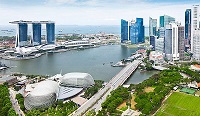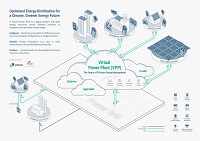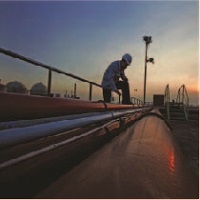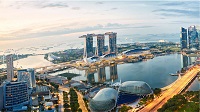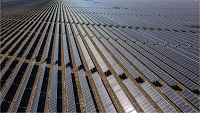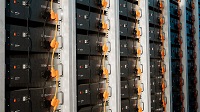A Singapore Government Agency WebsiteHow to identify
Official website links end with .gov.sg
Government agencies communicate via .gov.sg websites
(e.g. go.gov.sg/open).Trusted websites
Secure websites use HTTPS
Look for a lock ( )or https:// as an added precaution. Share sensitive information only on official, secure websites.
Ladies and gentlemen,
Good afternoon and a very warm welcome to all of you.
This is the third Energy Connect event held in conjunction with EMA’s annual Energy Forum. This event was conceived to provide students like yourself an opportunity to understand the latest issues in Energy, and to hear firsthand the opportunities in the sector.
Preparing for an Exciting Energy Future
This morning, some of you participated in the Sembcorp-EMA Energy Challenge. I hope you enjoyed the “Power Quest” game. It was conceived to give you a taste of working life, and an insight into career opportunities in the Power sector.
When should maintenance be done? Should I invest in research and development or just focus on maximising profits? These are decisions and trade-offs that managers constantly grapple with. How well you do will determine your bonuses for the year. Do badly and you could even lose your job.
Beyond power plants, there are many other opportunities in the sector. In 2014, we commissioned Singapore’s first Liquefied Natural Gas or LNG Terminal. The project took 7 years to plan and construct, and cost $1.7 billion dollars. Why did we build it? The LNG terminal allows us to tap into global sources of natural gas. Strategically, this is important and plans for another LNG Terminal in the eastern part of Singapore are underway. After my short talk, Mr. John Ng, CEO of SLNG, will speak on how LNG has transformed the energy landscape in Singapore.
On the electricity front, there have also been many innovations on both the policy and technology fronts. We have been slowly and surely opening up our electricity market. What does this mean to you? One day, you would be able to shop for electricity packages from different companies, choosing ones that best meet your lifestyle needs. For example, you might choose a package that charges lower prices at night because the bulk of your electricity consumption is in your air conditioner and you only use it at night. You choose a plan that best meets your lifestyle needs.
This is no different from how you choose a mobile plan today that allows you to have free phone calls to both friends and family. Having more retailers and retail options would also benefit you as it would translate to both competitive prices and improved service delivery.
On the technology front, there have also been many exciting developments. Emerging technologies like smart grids and energy storage will make the electricity grid more intelligent, resilient against cyber-threats and stable. On the demand side, we are also witnessing an explosion of new technologies and solutions from making cooling more efficient, and making it cheaper to light our homes. There are also emerging technologies that empower you, as a consumer, to track and manage your energy usage in real time.
From 2010 to 2014, Singapore’s installed capacity of grid-installed solar photovoltaic systems grew almost ten-fold. We continue to fine-tune the regulatory framework and have worked with industry players like Singapore Power to streamline the process of commissioning new installations. This, coupled with the fact that solar PV prices continue to drop, means that deployments would continue to grow, and grow at an accelerated rate.
Earlier this month, some of you joined us for a learning journey to Pulau Ubin. We have a micro-grid test-bed there that uses solar energy to power restaurants and bicycle shops. We built the micro-grid to study the impact of intermittency on the grid. Intermittency is what happens when within minutes the output of solar panels change significantly. This happens because of changing wind directions, cloud cover, and local storms. As solar penetration rises, if we don’t manage the fluctuations in solar output well, we could see instabilities in the grid. Through this test-bed, we are trying to better understand the impact of intermittent solar energy, as well as explore technologies and solutions that could help us mitigate these fluctuations.
These are indeed exciting times for the energy sector. The sector is in a phase of transformation. Over the next few years, new job classes would be created. To succeed, we would need a workforce that has a healthy level of curiosity, a passion to learn, and flexibility.
Powering Lives – Embarking on a Meaningful Career with the Power Sector
This year, we celebrate our 50th year of independence. Please stop for a moment to remember the people behind-the-scenes who quietly power your homes, businesses and our economy. Like water, power is critical for Singapore to succeed. Companies come to Singapore because we have a stable grid that has minimal disruptions. These companies create jobs for our families. A sudden fluctuation of power that causes the lights above to just flicker can cause some of our high-tech industries to lose millions of dollars. We cannot and should not take our power stability for granted.
To power the infrastructure, we need to nurture a strong Singapore-core for our workforce. We need people like Dennis Khah and Kris Xie. Dennis is currently an engineer with the network development division of SP PowerGrid, helping to ensure that people in the northern part of Singapore get their electricity. Dennis is part of a select group of talent in Singapore Power’s Management Trainee Programme which aims to train the next generation of leaders. They do this by exposing them at an early stage to different facets of the organisation, both technical and non-technical, at both a strategic and an operational level.
Kris has a degree in chemical engineering, and is currently a Chemical and Environment Engineer at TP Utilities. There, she leads a team of technical officers to ensure the safe and reliable operation of the company’s water and wastewater treatment plants. The job challenged her to go beyond her chemical engineering training, to areas of chemistry, biology and even plant design.
Dennis and Kris are examples of how the Power sector has been grooming talent by giving them exposure and practical experience from an early age.
As an industry, we have been coordinating our efforts to roll out various attraction, development and retention initiatives. Today, we launched the National Energy Competency Framework, or NECF. The NECF maps out career progression opportunities and the competencies required to fill various roles within the sector. The NECF is available on our new Powering Lives portal which is also being launched today. I encourage you to explore the portal to find out about energy careers, scholarships and upcoming events.
The Power sector rewards people based on performance. A case in point is EMA’s very own Shazali Sulaiman, whose childhood dream was to become an engineer. After graduating from ITE, Shazali started work in 2001 as a technician in the rail transport sector. Since starting work, Shazali never stopped upgrading himself, and this has paid off. He has since completed both his diploma and degree in mechanical engineering. He is today a senior engineer with EMA’s gas policy and infrastructure department. Shazali will share with you some of his thoughts and experience working in the sector.
So, how do you join the sector? You may wish to consider the Energy-Industry Scholarship, or EIS, which is Singapore’s first dedicated scholarship for the Power sector. There are both full and mid-term scholarships available. There are scholarships for ITE, Polytechnic or University. The scholarship covers full tuition fees, and allowances. EIS scholars can look forward to exciting industrial attachments, closed-door networking events and even overseas exchanges. The next round of applications for the scholarships will open in December. Do take note of the dates.
We are also in the process of developing an experiential learning journey called the “Powering Lives Trail”. The Trail will provide opportunities for students to gain insights into the sector through site visits. These visits also include special access to “restricted zones” such as Jurong Island where most of Singapore’s power plants are located. Sign up at our new portal to stay plugged in.
Conclusion
Lastly, I would like to encourage you to visit the Powering Lives exhibition just outside to help you to get to know the sector and its people better. Thank you for your kind attention and have a fruitful afternoon ahead.
